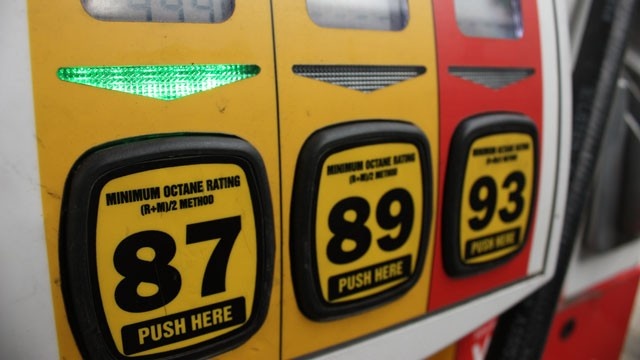A County that can take away your gas station is a county that takes away your freedom. If the Planners for the County could implement their plan, L.A. County would be the first county in the nation without PRIVATE transportation, other than a bike or feet. Think business could survive in that climate? Does the County even care? How many jobs will be lost immediately, how many businesses would be forced to close or move. Think you could like in Santa Monica and work in Pasadena, using government transportation—taking hours to get to work on an unreliable system run by a corrupt government?
“Oil derricks and refineries would disappear from the region.
Gas stations would become irrelevant.
Streetscapes would be dominated by electric vehicles, cyclists, and pedestrians.
That’s the vision laid out in a sustainability plan that will be considered Tuesday by the Los Angeles County Board of Supervisors.
If carried out, the list of 159 action items included in the plan could dramatically transform LA’s landscape in the coming decades. County officials call the scheme to phase out fossil fuels the “nation’s most ambitious” regional proposal.
“We recognize the climate crisis and the need to act,” says Gary Gero, the county’s chief sustainability officer. “This is going to be a lot of hard work.”
The totalitarian State is based on junk science and a legacy media afraid to report the facts and the implications of ending gas stations. Until then, the middle class needs to leave as soon as possible before the value of homes and businesses in the County collapse. And, it will happen.
A county sustainability plan is the latest framework for a carbon-free LA
By Elijah Chiland, LA Curbed, 8/5/19
The county’s plan calls on more people to walk, bike, or take public transit. Shutterstock
Oil derricks and refineries would disappear from the region.
Gas stations would become irrelevant.
Streetscapes would be dominated by electric vehicles, cyclists, and pedestrians.
That’s the vision laid out in a sustainability plan that will be considered Tuesday by the Los Angeles County Board of Supervisors.
If carried out, the list of 159 action items included in the plan could dramatically transform LA’s landscape in the coming decades. County officials call the scheme to phase out fossil fuels the “nation’s most ambitious” regional proposal.
“We recognize the climate crisis and the need to act,” says Gary Gero, the county’s chief sustainability officer. “This is going to be a lot of hard work.”
Like the city of LA’s sustainability initiative, referred to by local officials as a “Green New Deal,” the county’s plan calls for complete carbon neutrality by 2050—meaning that carbon emissions would be reduced to zero or completely offset on a countywide level.
By many estimates, that may be too slow.
According to the Intergovernmental Panel on Climate Change, global warming could reach 1.5 degrees Celsius above pre-industrial levels by 2030, with potentially devastating consequences. But the proposals from the city and county put Los Angeles in a position to honor the Paris Accord, which the U.S. abandoned in 2017.
Many elements of the plan could come together sooner. Gero says a proposal to power all of the county’s unincorporated areas using renewable energy could be realized even sooner than the 2025 goal included in the document.
Eliminating the county’s carbon footprint, even over a 30-year period, will require major shifts in LA’s planning process. Near-term solutions recommended in the plan include elimination of parking requirements for new housing and installation of bus-only lanes throughout the region.
Both strategies could be a tough sell for drivers and those wary of residential density. The reduction—or elimination—of parking minimums was a sticking point in debate over Senate Bill 50, a transit-oriented development proposal that remains stalled in the state legislature.
Meanwhile, multiple Metro plans for new dedicated bus lanes along major corridors like Colorado Boulevard have recently come under fire from some drivers and local officials.
Gero says the county’s strategy for cutting carbon emissions relies on convincing more people to walk, bike, or take public transit when traveling through the region. By 2045, the sustainability plan calls for a 50 percent increase in these types of trips—and a reduction in the number of miles residents drive each day to less than half of current levels.
“We’re going to have to have an open and honest dialogue about what the region needs,” Gero says. “Some people are going to be resistant, but this kind of change is never easy.”
Another likely challenge is the county’s proposal to “sunset” petroleum operations, eventually ending oil drilling and refining in a region that once ranked among the world’s most prolific oil production sites.
California’s oil boom is over, but the petroleum industry remains a major driver of the state’s economy, and Gero says a key part of phasing out fossil fuels will be replacing oil industry jobs and creating opportunities for green energy providers.
One segment of the plan calls for job training and creation of a “just transition” task force to ensure workers aren’t left behind in the pursuit of a greener economy.
As in the city’s sustainability initiative, the plan includes no guarantees that the county will meet its goals. One major obstacle is that the Board of Supervisors has limited jurisdiction over the 88 individual cities found in LA County. That means plenty of coordination between city, county, and state agencies will be required to make any of this happen.
Gero says county department heads will be required to provide frequent updates on progress, with the sustainability goals serving as barometers of success. Ultimately, though, it will be up to residents to see these plans through.
“Ultimately it’s the stakeholders who will hold us responsible,” he says.




:max_bytes(150000):strip_icc():focal(749x179:751x181):format(webp)/john-clauser-nobel-prize-physics-100422-2-0ad4e3a4919548cfb3b7f022d4b415c5.jpg)